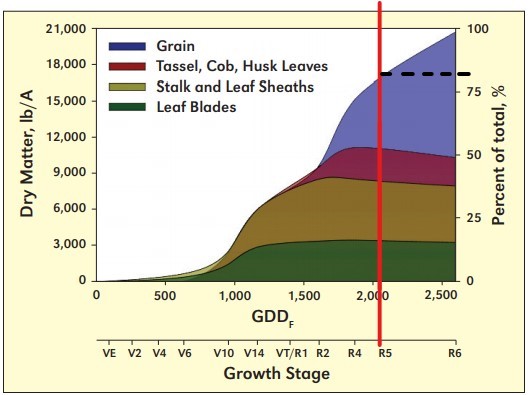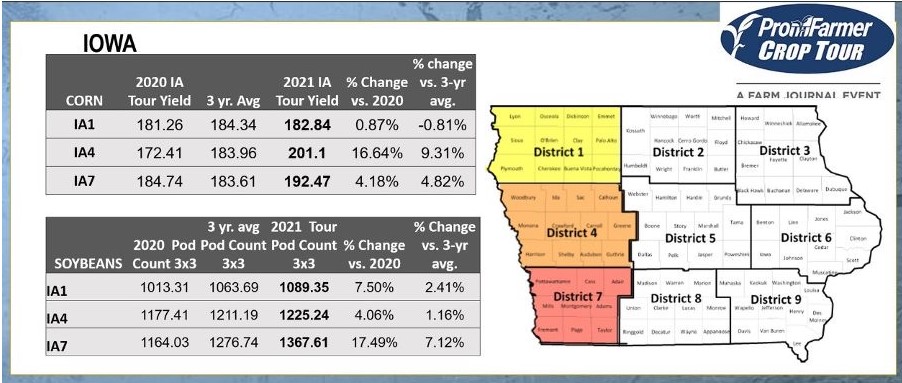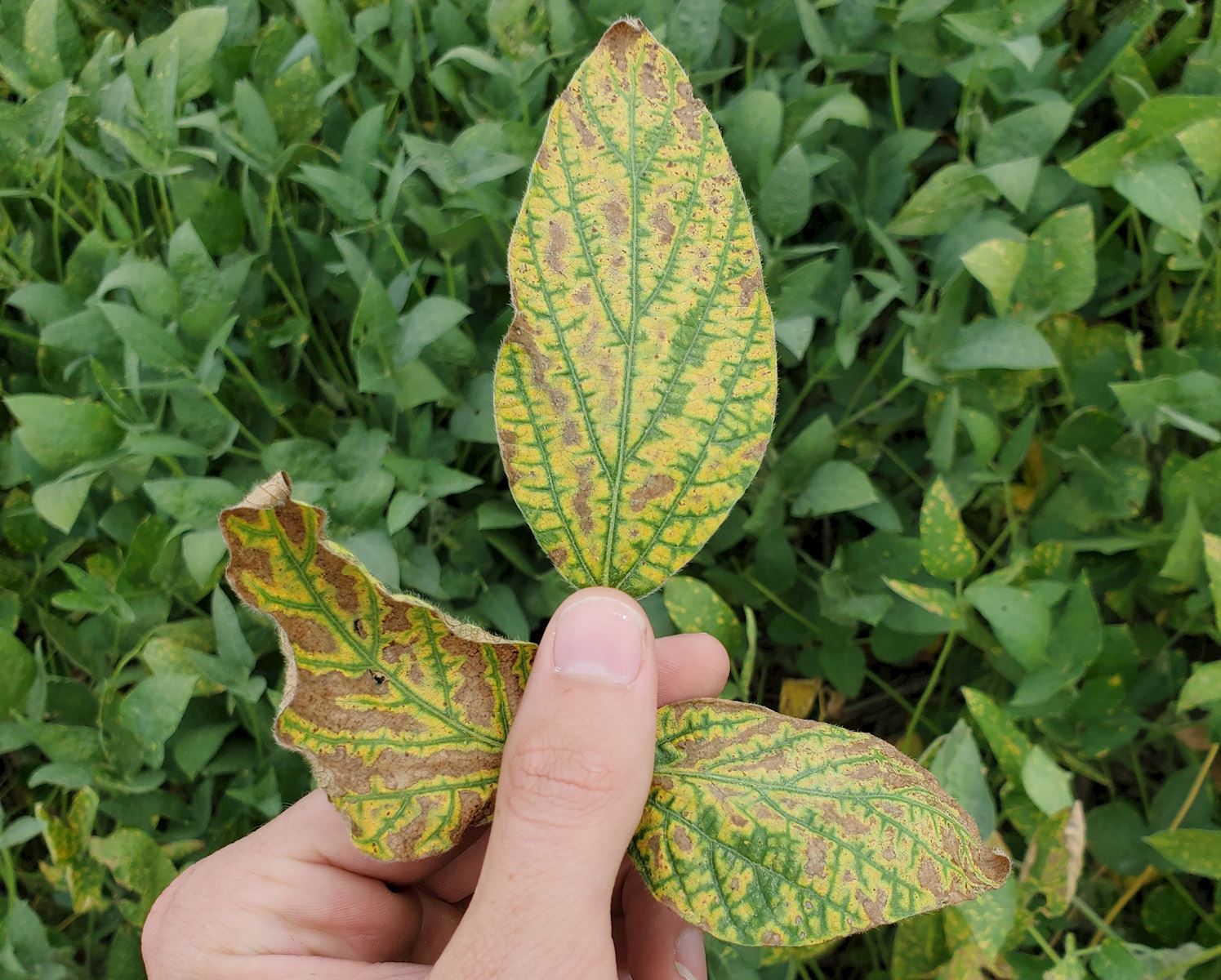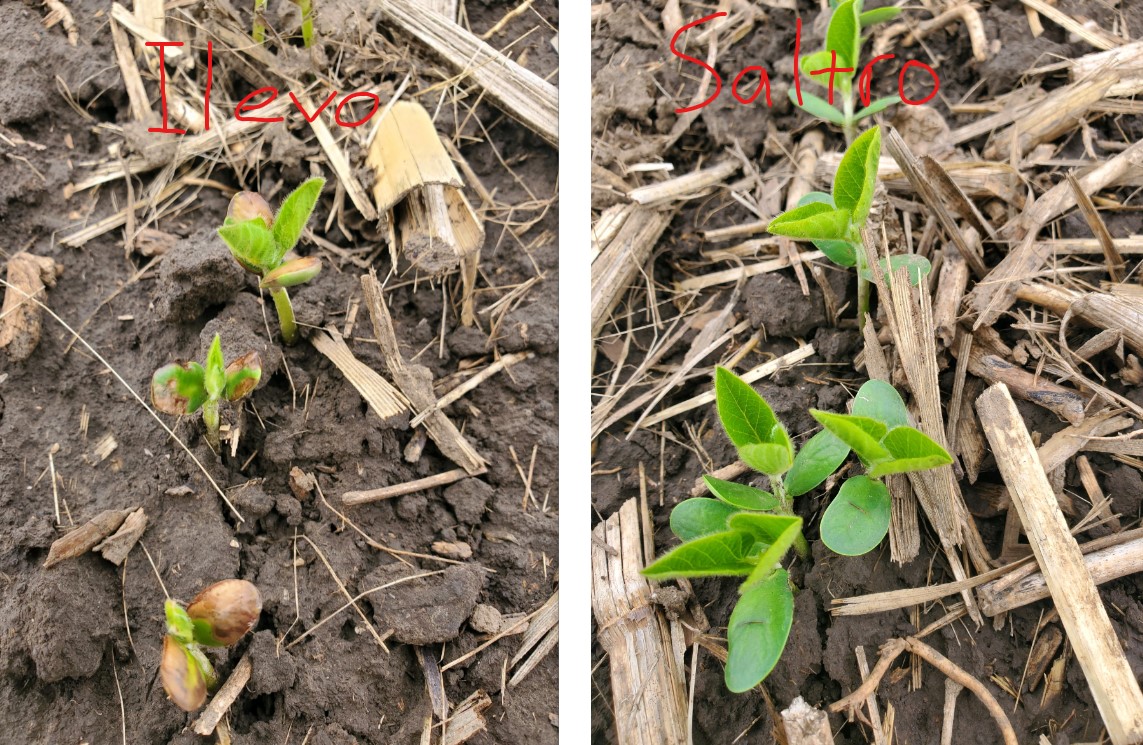August 20th, 2021
posted
by Andrew Blomme on 8/20/2021
in
Weekly Newsletter

August 20th, 2021
Home Stretch for the Corn
Our corn crop is beginning to dent. Typically when a corn crop reaches R5, or the dent stage, it has 24-30 days until it reaches black layer, or maturity. The next 3-4 weeks are the last opportunity for a corn plant to pack dry matter, or starch, into its kernels.
The graph below shows dry matter accumulation within a corn plant based on its growth stage. The growth stages are on the lower axis and the percent of total dry matter accumulation is on the right vertical axis. This graph is further split into sections of where the dry matter is located within the plant. The red line denotes where our crop is today.

The point of this graph is to show that today a corn kernel has 50-60% of the maximum amount of starch it can hold. Essentially we have produced a little over half of our corn yield up to this point and the other 40-50% of our yield will form over the next 24-30 days. This period of grain fill at the end of a corn plant's lifecycle is extremely important and will have a big influence on final yields.
As we talk about yields for our area, below you will find a summary of the Pro Farmer Crop Tour results for Western Iowa. We have a lot of potential here in western Iowa and weather forecasts look very favorable to a strong finish for this corn crop. Time will tell what ends up happening but it looks to be a fun fall if we meet these expectations.

Sudden Death Syndrome
Pockets of SDS, sudden death syndrome, are observable in several soybean fields throughout our area. SDS is one of the most prevalent, yield-robbing diseases in US soybean production. Soybeans that are infected with SDS show a unique leaf morphology, as pictured below. Leaf tissue between the veins die first, creating this unique pattern. SDS results in root rot, dying plant tissue and can prematurely kill a soybean plant.

Sudden death syndrome damage depends on the intensity of the infection. In heavily infected areas, yield losses can exceed 20% of total yield. Yield loss from SDS can be avoided. There are two seed treatments on the market, Saltro and Ilevo, that provide control of SDS in soybeans. While both products provide SDS control, Ilevo causes some unnecessary early season stress to soybean seedlings with its "halo effect" burning on soybean cotyledons. The picture below shows a side by side comparison of Ilevo and Saltro seed treatments and their effect on soybean seedlings. Herbers Seed has been applying Saltro instead of Ilevo for this very reason.

Now is the best time to scout to determine if SDS is in your fields and if control methods need to be used in the future. Due to the introduction of new products, like Saltro, SDS has never been easier to control. With the right field knowledge and effective products, yield losses from SDS should be zero.
Looking Forward
We are getting down to the home stretch of the growing season. Soybeans are in R6 or full seed. I wouldn't be surprised if we start to see some early season soybeans start to begin R7, beginning maturity, towards the end of next week. This is signified by the plants starting to change color and beginning to dry down. The corn crop is also approaching maturity. As ears start to dent and pack starch we will be able to see the milk line progress from the top of the kernel towards the cob. Scouting will be focused on crop diseases, insect pressure, and crop development.